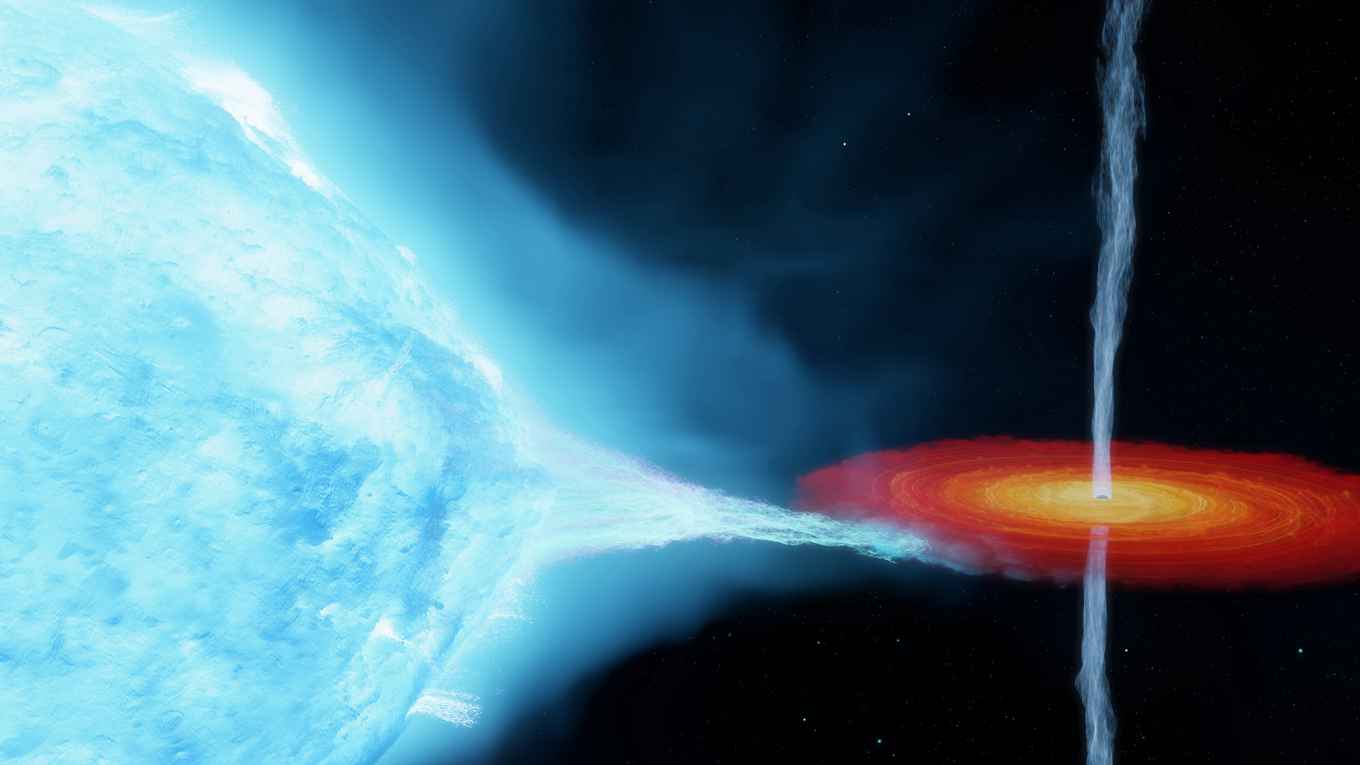Historic black hole more massive than previously thought
18 February 2021

An international team of astronomers led by James Miller-Jones (Curtin University, Australia) used the Very Long Baseline Array to observe the black hole and the surrounding area over a six-day period. The Very Long Baseline Array is a radio telescope with a network of ten antennas spread across the United States, together forming one large combined telescope.
By monitoring the black hole over several days, the astronomers were able to see how fast the black hole moved relative to stars in the very far distance. This allowed them to determine the exact distance between the black hole and Earth. This turned out to be much greater than previously thought. The scientists were then able to calculate the mass based on the distance and the orbital period of the black hole around its companion star. That turns out to be 21 solar masses, rather than the previous best estimate of 15 solar masses. The companion star also has a significantly greater mass than researchers had long thought..
Bridging the gap
As a result of these new observations, Cygnus X-1 immediately jumps to first place in the category "most massive stellar black hole with companion star". Co-author Phil Uttley (University of Amsterdam): 'This is interesting, because these kinds of massive stellar black holes and companion stars can eventually merge to form a heavier black hole. We have already captured gravitational waves from merging black holes with these more medium-sized masses, but were unable to provide a proper explanation through observations.'
Co-author Sera Markoff (University of Amsterdam) adds: 'This therefore reduces the gap between low-mass, stellar black holes and the medium-mass black holes that have been discovered through gravitational waves. Now that we have very precise data for the mass and distance of Cygnus X-1, we will also be able to refine our theoretical models about black holes.'
Geiger counters went haywire
Cygnus X-1 was discovered in 1964 when Geiger counters on board a suborbital rocket went haywire. They turned out to be receiving large amounts of x-ray radiation from space. For a long time, the scientific world was unconvinced that this was caused by a black hole. In 1974, famous physicist Stephen Hawking even bet that Cygnus X-1 was not a black hole. He admitted defeat in 1990.
The Cygnus X-1 black hole probably started life as a star with a mass of approximately sixty times that of the sun. Tens of thousands of years ago, the star collapsed in on itself, becoming a black hole. The black hole now orbits a large companion star every five and a half days.
Scientific article
James Miller-Jones et al. Cygnus X-1 contains a 21-solar mass black hole – implications for massive star winds. Science, February 19 2021.
Original: https://science.sciencemag.org/cgi/doi/10.1126/science.abb3363 (from February 19)
Free preprint: https://www.astronomie.nl/upload/files/2021/Miller-Jones-Science2021.pdf
The Astrophysical Journal will simultaneously publish two related articles: "Reestimating the Spin Parameter of the Black Hole in Cygnus X-1" en "Wind mass-loss rates of stripped stars inferred from Cygnus X-1".